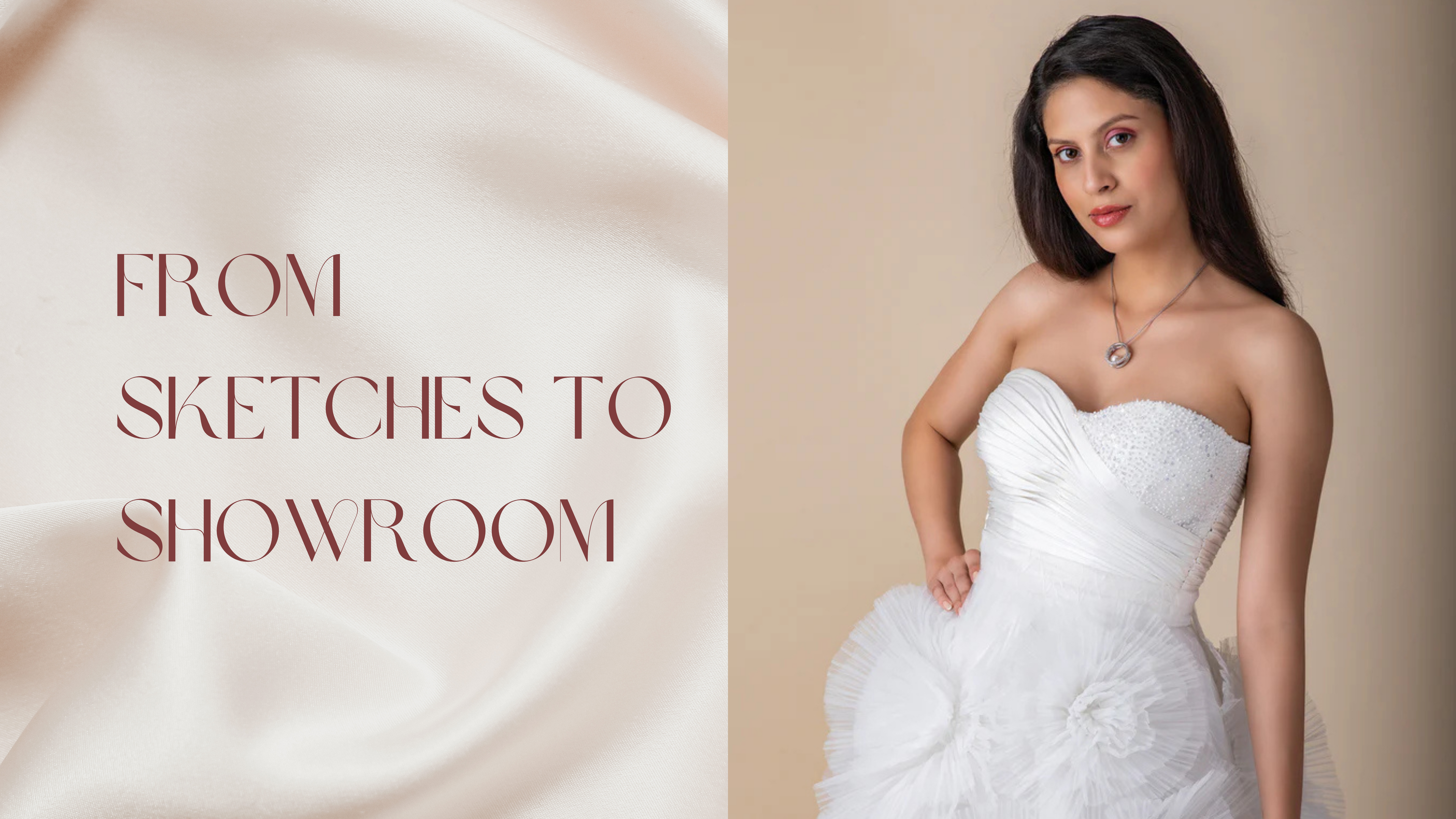Your Step-by-Step Guide to Bridal Gown Manufacturing From Sketches to Showroom
By Sweta Mardaa on

Bridal gown manufacturing is a complex and intricate process that demands attention to detail at every step. Whether you’re an aspiring bridal designer or an established label, understanding the full journey of a bridal gown from concept to completion is essential. This blog will provide a step-by-step guide to help you navigate the bridal gown manufacturing process, from sketching designs to getting your gowns into the showroom.
Planning Your Bridal Collection
The first step in manufacturing a bridal gown is creating a comprehensive plan for your collection. This starts with defining your bridal aesthetic, which is crucial in setting the tone for your entire collection. Are you focusing on classic, vintage, or modern bridal styles? Once you’ve decided on the direction, create mood boards to visually capture the vibe you want to convey.
Sketching your designs is the next step. Detailed sketches will serve as the blueprint for your gowns, helping your manufacturer understand your vision. When preparing tech packs, include specifics on fabric choices, sizing, embellishments, and any unique design elements. It’s important to make these tech packs as detailed as possible to avoid miscommunication during the manufacturing process.
Choosing the Right Manufacturing Partner
Choosing the right bridal manufacturer is one of the most crucial decisions you’ll make during the production process. Your manufacturer will bring your designs to life, so it’s essential to work with a company that specializes in bridalwear and understands the high standards required for these garments.
Look for a manufacturer with a proven track record of producing wedding gowns. Review their portfolio to see if they’ve worked on designs similar to yours. You should also consider factors like their approach to ethical production, ability to meet your quality control standards, and flexibility when it comes to working with small batches or custom requests.
When working with bridal gown manufacturers, communication is key. Make sure they understand your vision, ask about their prototyping process, and inquire about their ability to handle any special fabrics or embellishments that are central to your design.
The Prototyping and Sample Development Process
Once you’ve found a manufacturer, it’s time to start developing prototypes. This is where your sketches and tech packs come to life. A good manufacturer will begin with creating a sample of your gown. This sample will allow you to assess the fit, design details, and overall construction of the gown.
Expect to go through several rounds of adjustments as you work with your manufacturer. Fit issues may arise, and adjustments to the pattern may be necessary to ensure that the gown fits perfectly. If you’re working with delicate fabrics or intricate embellishments, make sure that your manufacturer can execute these elements to your satisfaction.
Once the sample is approved, it’s time to move forward to the production stage. This is where your final design is replicated in larger quantities, and your bridal gowns begin to take shape.
Final Production and Quality Control
As production begins, it’s essential to maintain high standards of quality control. Bridal gowns require the utmost attention to detail—every stitch, bead, and fabric choice must be flawless. Work closely with your manufacturer to establish quality control checkpoints at various stages of the production process.
Before the gowns are shipped, do a final inspection to ensure that every piece meets your standards. Quality checks should focus on fabric quality, stitching, embellishments, and overall construction. A bridal gown must be perfect because it’s a symbol of one of the most important days in a bride’s life.
Getting Your Bridal Gowns Ready for the Showroom
Once your gowns are completed, the final step is to get them ready for the showroom. This includes proper packaging, tagging, and preparing for any photoshoots that will be used for marketing. Your gowns should be handled with care to avoid any damage before they reach your clients or store.
In the showroom, bridal gowns must be displayed to their full advantage. Consider how the gowns will be presented to customers. High-quality images, well-lit displays, and attention to detail can help create an unforgettable experience for potential buyers.
